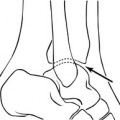Chapter 11 Lymph glands, lymphatics and tumours
Positron Emission Tomography Imaging
Positron emission tomography (PET) imaging is a technique used to detect and accurately stage malignant disease, to differentiate benign and malignant tissue, and to assess response to treatment. Until recently, PET imaging availability was restricted due to high capital cost and logistics of radiopharmaceutical supply. It uses short-lived cyclotron-produced radionuclides such as 18Fluorine, 11Carbon, 13Nitrogen and 15Oxygen with half-lives of 110, 20, 10 and 2 min respectively. 18Fluorine is the only one of these that has a half-life long enough to allow it to be produced off-site. This does permit 2-[18F]fluoro-2-deoxy-d-glucose (18F-FDG), the single most important PET radiopharmaceutical, to be used by sites without their own cyclotron.
The widespread acceptance of PET as a major advance is due to two major factors:
2-[18F]FLUORO-2-DEOXY-D-GLUCOSE (18F-FDG) PET SCANNING
Indications (oncology)
General
Patient preparation
Technique
British Nuclear Medicine Society Web Site guidelines –. www.bnms.org.uk, 2008.
Cook G.J., Wegner E.A., Fogelman I. Pitfalls and artifacts in 18FDG PET and PET/CT oncologic imaging. Semin. Nucl. Med.. 2004;34(2):122-133.
Kapoor V., McCook B.M., Torok F.S. An introduction to PET CT imaging. RadioGraphics. 2004;24(2):523-543.
Rohren E.M., Turkington T.G., Coleman R.E. Clinical applications of PET in oncology. Radiology. 2004;231(2):305-332.
von Schulthess G.K., Steinert H.C., Hany T.F. Integrated PET/CT: current applications and future directions. Radiology. 2006;238(2):405-422.
Gallium Radionuclide Tumour Imaging
This is rarely used, having almost entirely been superseded by cross-sectional techniques and PET scanning.1 The main disadvantages are the high radiation dose, the extended nature of the investigation, its non-specific nature, and difficulties in interpretation in the abdomen due to normal bowel activity.
Indications
Equipment
Stay updated, free articles. Join our Telegram channel

Full access? Get Clinical Tree






